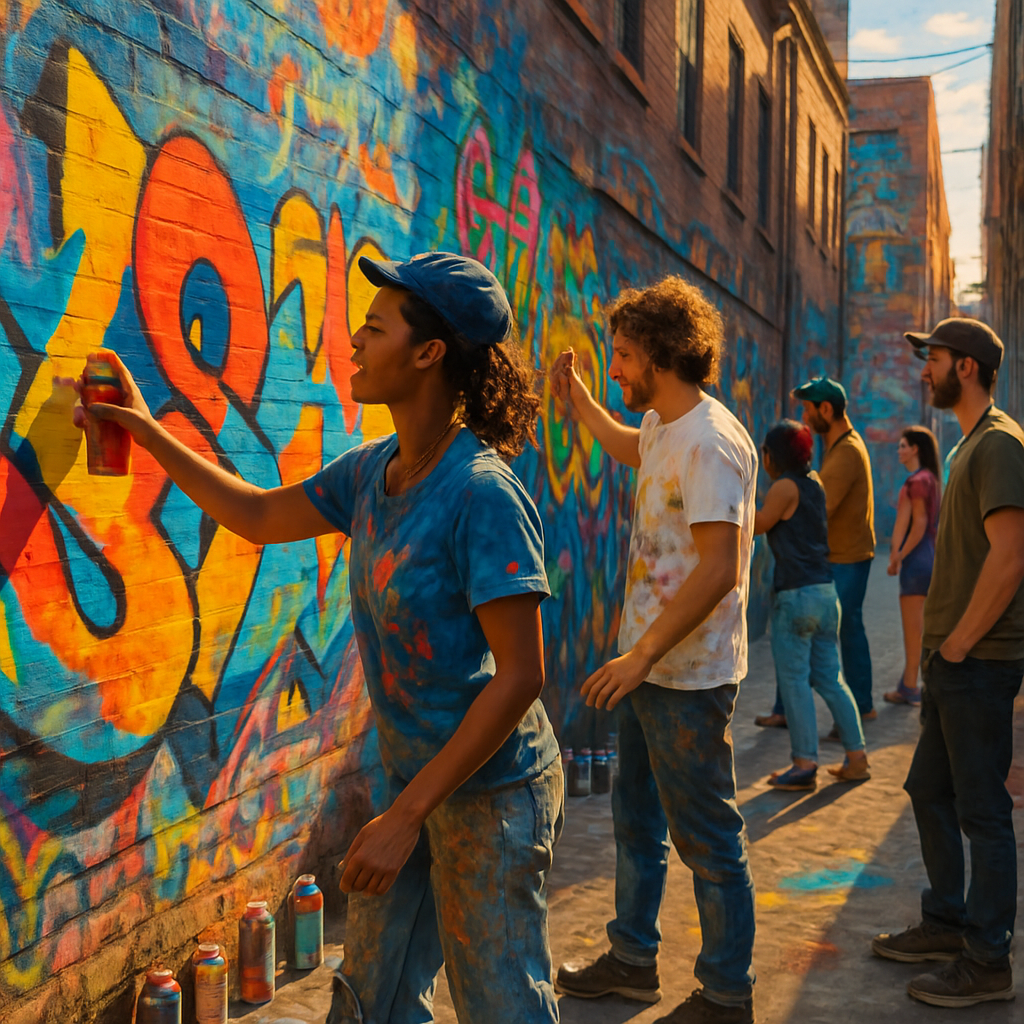The Evolution of Street Art as a Cultural Movement

From crude spray-painted tags on subway cars to multimillion-dollar canvases in prestigious galleries, street art has undergone a remarkable transformation. What began as acts of rebellion has morphed into a recognized art form that challenges conventional aesthetics while documenting social change. The evolution of street art reflects broader shifts in how we define art, who creates it, and where it belongs.
Street art emerged from graffiti culture in the late 1960s and early 1970s, particularly in New York City, where young people from marginalized communities used public spaces as canvases for self-expression. These early practitioners weren’t calling themselves artists they were simply marking territory, expressing frustration, or seeking recognition in a society that often rendered them invisible.
The signature “tags” of early graffiti writers like TAKI 183, who gained notoriety when the New York Times profiled him in 1971, represented a fundamental human desire: to be seen and acknowledged. As one former tagger told me while I was researching this piece, “When you grow up in a neighborhood where nobody knows your name, putting it on a wall that thousands of people see every day feels like finally existing.”
As tagging evolved into more elaborate “pieces” (short for masterpieces), the artistic ambition grew. By the 1980s, artists like Keith Haring and Jean-Michel Basquiat were bridging the gap between street and gallery, bringing elements of graffiti into the formal art world. This transition wasn’t without controversy many traditional art critics dismissed street art as vandalism rather than valid artistic expression.
From Vandalism to Valuable Art
The transformation of street art from criminal activity to coveted commodity represents one of the most dramatic shifts in art history. This change didn’t happen overnight but accelerated dramatically in the early 2000s with the rise of artists like Banksy, whose stenciled works combined technical skill with sharp political commentary.
Banksy’s anonymity and subversive approach to installation placing his works in public spaces without permission maintained the rebellious spirit of early graffiti while elevating the form through sophisticated messaging and technique. When his pieces began selling for hundreds of thousands of dollars, the art world could no longer ignore street art’s cultural significance.
The commercialization of street art has created fascinating contradictions. Works created illegally on public property have been physically removed and sold at auction. Artists who once ran from police now receive commissions from major brands and municipal governments. This mainstreaming has sparked debates about authenticity and selling out.
I witnessed this tension firsthand at a street art festival in Bristol a few years ago. A veteran artist was creating a mural alongside younger practitioners. During a break, he confessed to feeling conflicted about painting with permission and sponsors. “Twenty years ago, I would have been arrested for this exact same piece,” he laughed. “Now I’m getting paid and they’re serving refreshments.”
The legitimization of street art has opened doors for many artists but also raised questions about what happens when counterculture becomes culture. Does street art lose its power when it’s sanctioned and commercialized? Or does mainstream acceptance allow these artists to spread their messages to wider audiences?
Street art’s increasing value has also created problems of preservation. Works created with temporary materials in public spaces were never meant to last forever. When a Banksy piece might be worth millions, who decides whether to protect it? Who owns art created on someone else’s property? These questions continue to challenge our legal and ethical frameworks around public space and art ownership.
Global Movement and Social Impact
What makes street art particularly fascinating is its simultaneous global spread and local adaptation. From Berlin to São Paulo, Tokyo to Melbourne, street art movements have developed distinct regional characteristics while maintaining connections to the broader global movement.
The internet has played a crucial role in this global exchange. Before social media, street art was ephemeral you had to physically see it before it was removed or painted over. Now, digital documentation allows works to live on and influence artists worldwide. This connectivity has accelerated the evolution of styles and techniques while creating a global conversation about the purpose and meaning of public art.
Street art has also become an important tool for social and political commentary. In politically repressive environments, street art offers a way to express dissent when traditional channels are blocked. During the Arab Spring, street art flourished as a form of protest and documentation. In Palestine, artists like Banksy and local creators have used the separation wall as a canvas to comment on the conflict and humanize those affected.
The documentary nature of street art makes it particularly effective for social commentary. Unlike art in galleries, street art exists in the same spaces where social issues play out. When an artist creates a piece about homelessness on the same streets where people sleep rough, the message carries additional weight and immediacy.
This social dimension has helped street art maintain relevance even as it becomes more commercially successful. Many established street artists use their platforms to highlight causes and communities that might otherwise be overlooked. JR’s large-scale photographic installations, for example, bring visibility to marginalized communities from the favelas of Brazil to the US-Mexico border.
The participatory aspect of street art also sets it apart from traditional art forms. Many street artists create works that invite public interaction or contribution. When I stumbled upon a community mural project in Barcelona, local residents were adding their own touches to a framework created by a professional artist. This collaborative approach challenges the notion of the artist as solitary genius and art as untouchable.
The COVID-19 pandemic sparked another wave of street art globally, with artists responding to the crisis through public works that documented shared experiences, honored healthcare workers, or criticized government responses. These works provided comfort and connection during a time of isolation, demonstrating street art’s unique ability to create community through shared visual experiences.
Street art’s evolution reflects broader changes in how we consume and interact with culture. As traditional cultural gatekeepers lose influence, art forms that develop outside institutional structures gain legitimacy. The success of street art has paved the way for other outsider art movements to gain recognition and respect.
The movement continues to evolve in response to technological and social changes. Digital and augmented reality street art blurs the line between physical and virtual public space. Environmental street artists create works that highlight climate change and sustainability. As new generations of artists emerge, they bring fresh perspectives while building on the foundation laid by earlier pioneers.
Street art’s journey from criminalized activity to celebrated art form offers lessons about cultural evolution and the power of outsider voices. By claiming public space for expression, street artists have fundamentally changed our visual landscape and expanded our understanding of what art can be and where it belongs.
The walls of our cities have become dynamic canvases that reflect our collective hopes, fears, and dreams. Through street art, we can trace the outline of social movements, political shifts, and cultural transformations a living record of our times painted in vivid color on the surfaces we pass every day.


